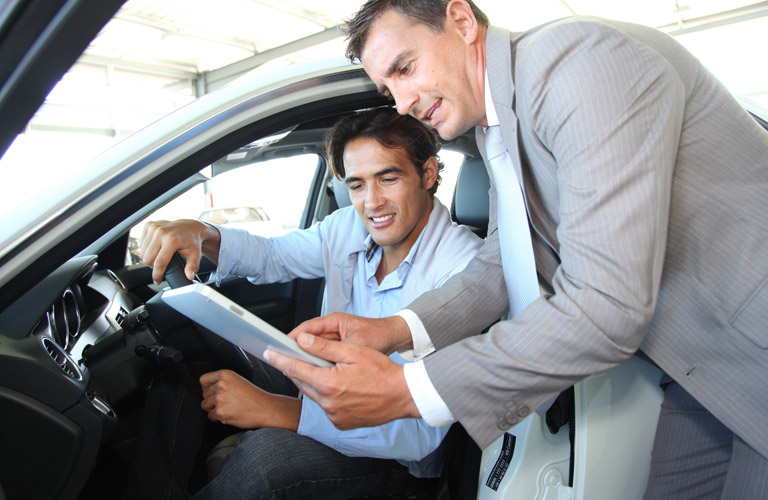When buying a used car, we should make sure that it is still in a good condition. We shouldn’t complete trust car salesmen and they usually try to hide some flaws of the cars. By taking a test drive, we could make sure that the car will work properly. We shouldn’t only drive the car on smooth, straight roads. If possible, we should make sure that the car can negotiate winding curves and drive properly on rough roads. We should also check the car whether it has sufficient braking power. The test drive session should be at last 30 minutes and this should allow us to assess whether the car works properly.
There are many things that we can examine directly during the test drive session. We could check that the steering wheel is in proper position when we drive the car straight. Try to release the steering wheel and see whether the car has a tendency to swerve to one side. When the car is driven at high speed, we should check whether the steering wheel vibrates. When applying the brakes, the car shouldn’t pull to one side. If it happens, then we may need to replace the brake callipers or perform alignment on the front end. We should doubt the ability of the car of working smoothly if we feel even the slightest vibration when we apply the brakes.
It is better to not talk with someone when we test driving the car. This will disturb our concentration and driving style. It is a good idea to test the stereo too, but we should turn it off for the major proportion of the test drive session to help us hear noises better. We could talk with the person who accompanies us when we want to ask or confirm something. When test driving the car, we should check how the car performs with the air conditioning turned on and off. This should allow us to know whether there’s a significant power drain. We should drive on the road with thin traffic, because we are more likely to manoeuvre the car more often.
We need to start out more slowly and move the car from side to side smoothly. We should listen to any kind of clunking noise, since this could indicate a suspension problem. To confirm that there’s a suspension issue, we could try to accelerate harder while listening to any noise. When we push and lift the accelerator, the car should respond efficiently and quietly. The accelerator should be tapped modestly so we can listen to thuds and clunks. Distorting buzzing could also hint faulty and loose drive lines. Sometimes, there could also be too much noise when we open the sunroof and windows.
When we open and close sunroofs and windows, we should check for any fault. The brakes should be able to stop the car properly. As an example, we should try to brake hard when driving at 50mph to confirm that the braking system is working properly. This way, we can be sure that the car can stop properly during an emergency situation. Even without the antilock brakes, the car should be able to stop following an imaginary straight line and this could be achieved with no wheel lockup. However, it is normal to hear buzzing and feel vibration if the car has ABS system.

